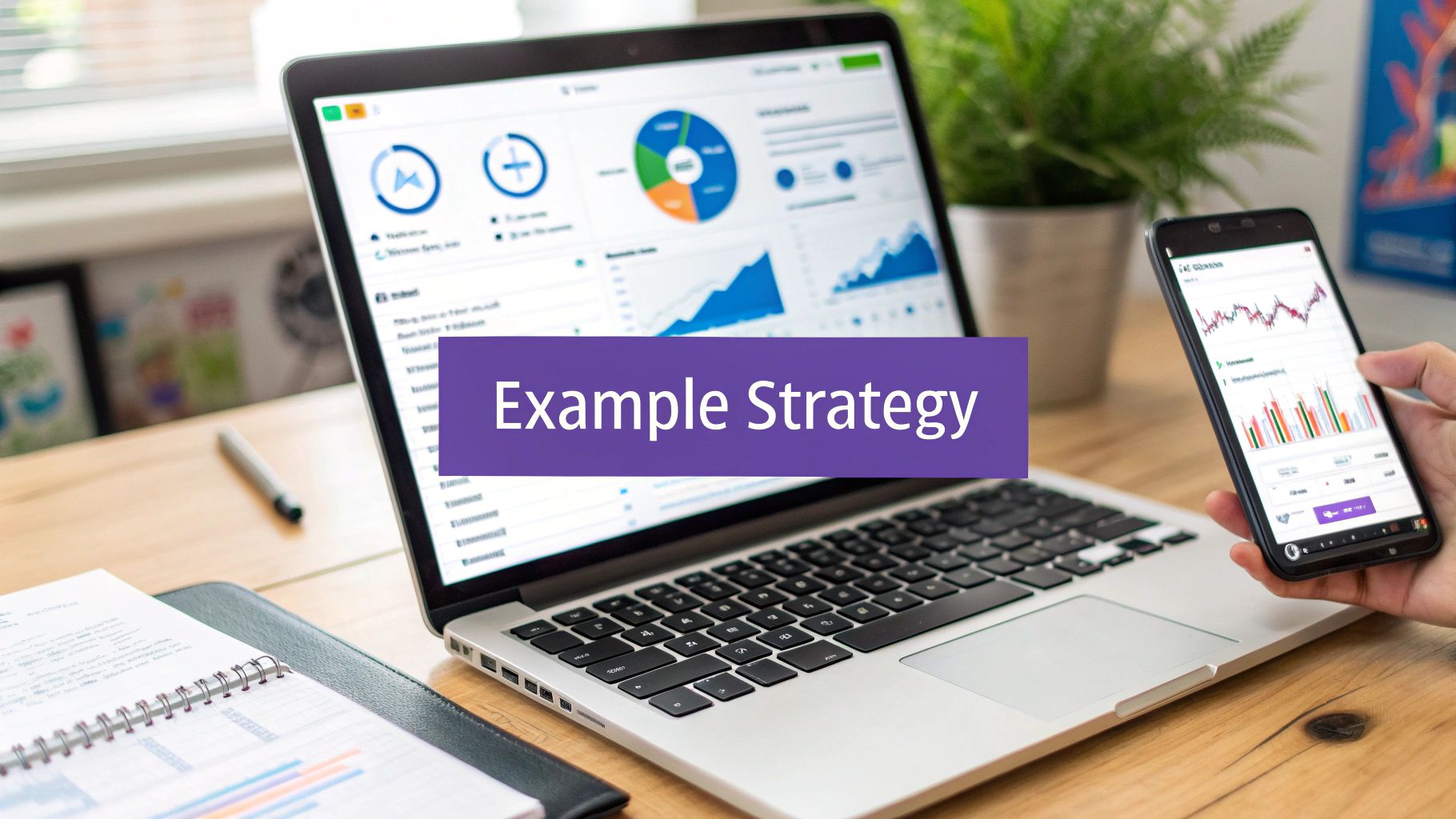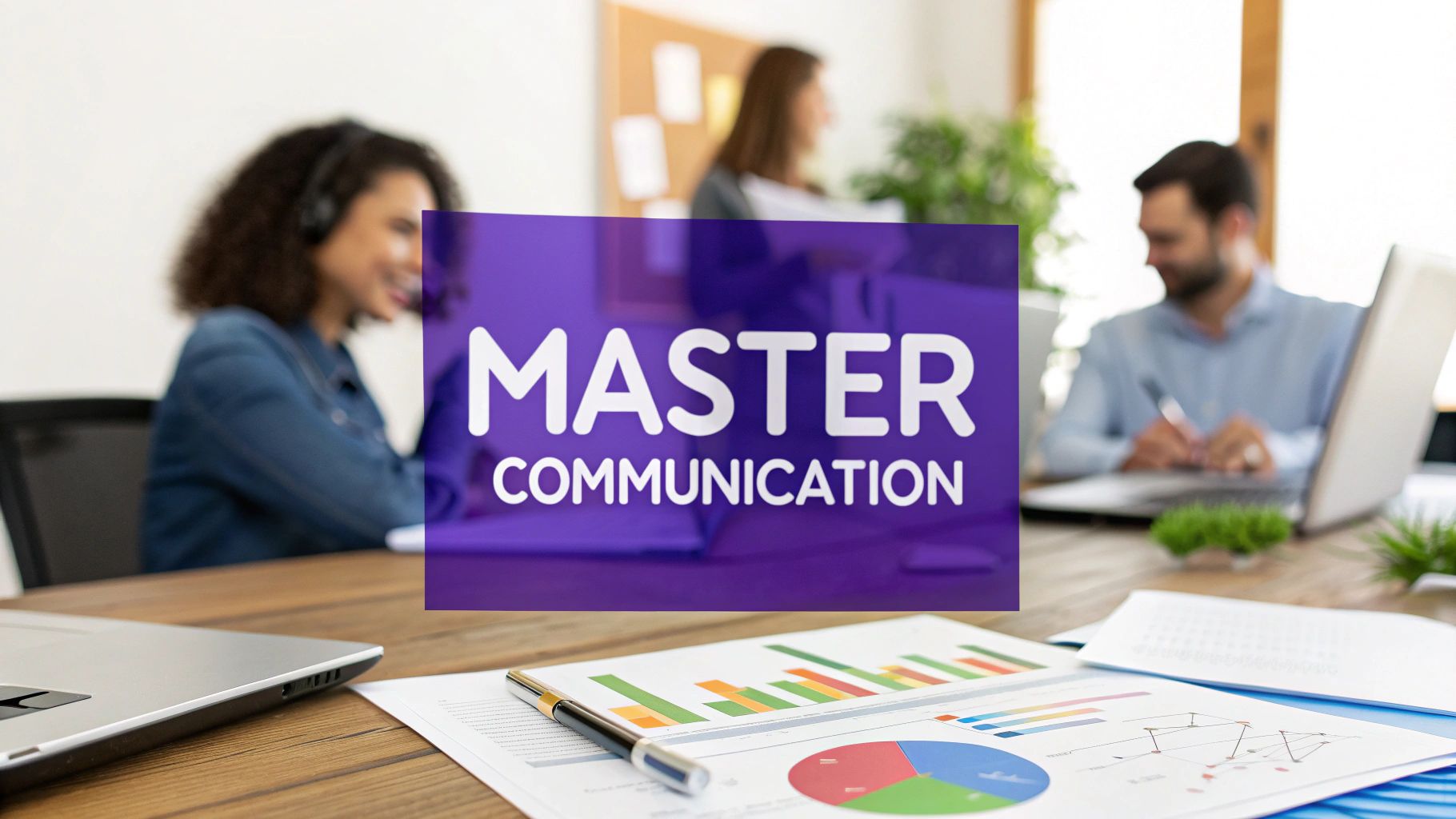Ultimate White Label Social Media Services Guide
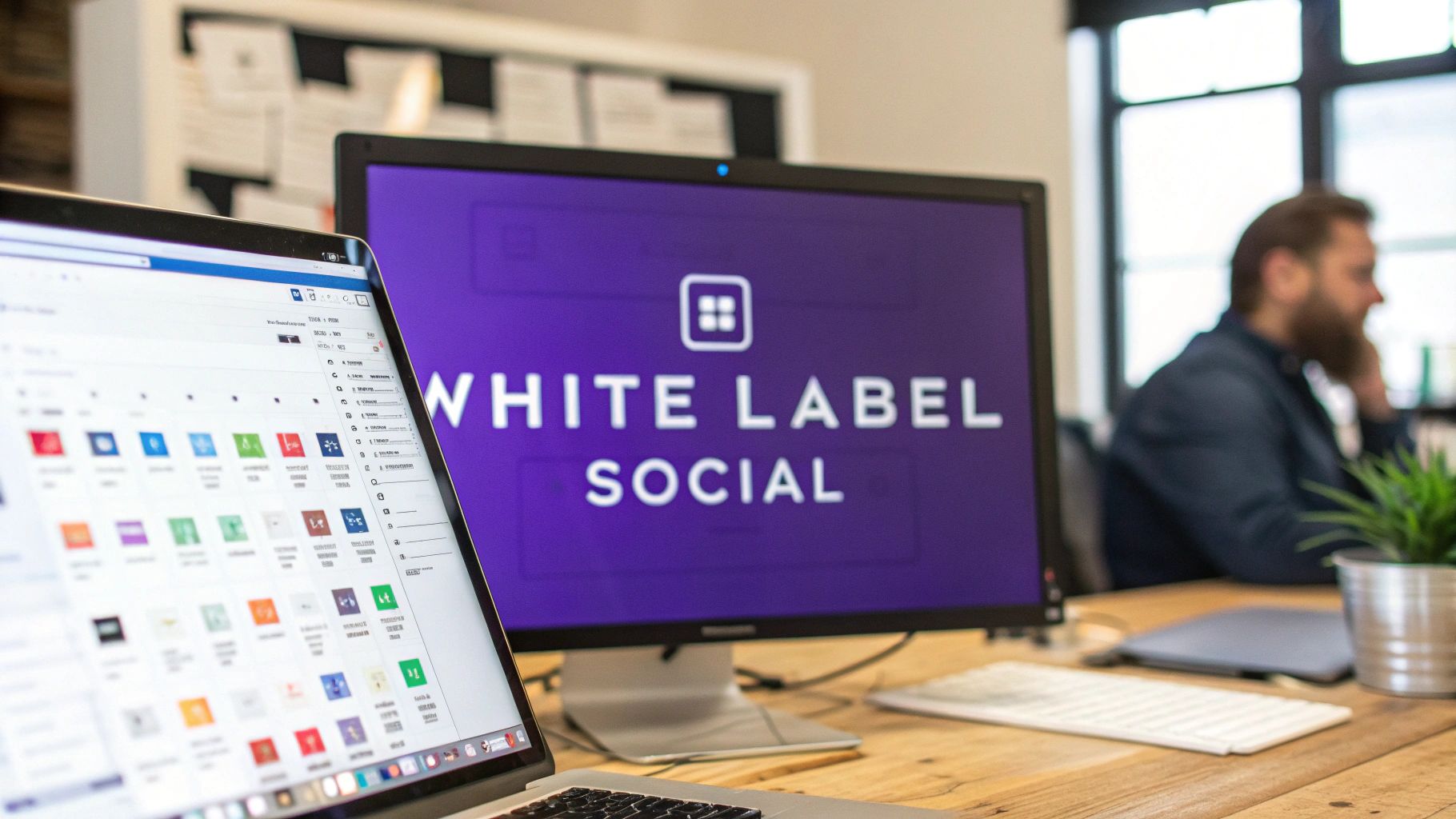
White label social media services let agencies offer a full suite of social media management under their own banner—even without a specialist team in-house. A third-party provider handles strategy, content creation, scheduling, and analytics, delivering polished work that looks like yours. It’s a fast way to expand your menu of services and boost revenue without adding overhead.
Decoding White Label Social Media Partnerships

Picture your agency as a boutique bakery, celebrated for ornate cakes but missing the ovens to bake artisan loaves. Instead of turning away customers who want fresh bread, you join forces with a master baker down the street. Each morning, they deliver unbranded, top-quality loaves that you repackage with your logo and sell as your own.
Your customers never see the partnership. They simply enjoy a wider selection and keep coming back. That’s exactly how white label social media services empower your agency to say “yes” to more opportunities.
Your Agency as the Bakery
You bring the brand recognition, client relationships, and big-picture strategy. Maybe your team shines at creative campaigns but lacks deep expertise in TikTok ads or LinkedIn lead generation. Saying “no” costs you growth—partnering lets you fill those gaps instantly.
The White Label Provider as the Artisan Baker
Behind the scenes, a dedicated team drills into the day-to-day details: crafting posts, planning calendars, monitoring performance, and refining tactics. They work invisibly, handing over ready-to-go assets that slot right into your workflow.
Key Takeaway: From the client’s view, every post, report, and campaign win comes straight from your agency. Your brand stays front and center while you quietly tap into outside expertise.
This setup keeps the lines clear: you nurture the client relationship, steer the strategy, and share the results. Meanwhile, your white label partner executes the heavy lifting—so you scale efficiently without swelling your payroll.
By exploring broader white label marketing solutions, you can unlock even more ways to grow your offerings without extra hires.
| Stakeholder | Role & Responsibilities |
|---|---|
| Your Agency | Owns the client relationship, defines goals, reviews content, and presents branded reports. |
| White Label Partner | Manages daily social media tasks—content creation, scheduling, campaign management, and performance analysis. |
| The End Client | Interacts only with your agency, receives on-brand deliverables, and credits you for all success. |
Unlock Business Growth With White Label Social Media Services
Most growing agencies eventually hit the same wall. You’re crushing it with your core services—maybe web design or SEO—but then a great client asks for a complex social media campaign. You hesitate. Do you turn them away and leave money on the table? Or do you try to build an entire social media department from scratch? It’s a massive undertaking.
This is exactly where white label social media services come in. They’re not just an outsourcing solution; they’re a powerful growth engine. Instead of saying "no" or stretching your team thin, you can confidently add new capabilities overnight. It's about adding new revenue streams without the usual risks and overhead.
Instantly Access Expert Talent
Imagine your client in the cutthroat e-commerce space needs a high-stakes TikTok ad campaign, but your team has zero experience with the platform. The traditional route is a long and expensive hunt for a specialist. That search could drag on for months and cost a fortune in recruitment fees alone.
With a white label partner, you get immediate access to a team of seasoned social media pros. These aren't interns learning the ropes; they're experts who live and breathe the latest platform algorithms, content trends, and ad tactics.
This means you can launch a sophisticated campaign with a 30% faster turnaround than building a team yourself. You completely sidestep the learning curve and deliver expert-level results from day one, which goes a long way in building client trust and positioning your agency as a full-service leader.
Expand Your Service Offerings
Every service you don't offer is a potential reason for a client to start looking elsewhere. White label partnerships let you instantly bolt on new, in-demand services to your agency’s menu. All of a sudden, you're not just the "SEO agency" anymore. You’re the agency that also nails:
- Paid Social Advertising: Running killer ad campaigns on platforms like LinkedIn, Instagram, and Facebook.
- Community Management: Actually talking to your client’s audience, responding to comments, and building a real community.
- Influencer Marketing: Finding and managing partnerships with creators to blow up brand reach.
- Advanced Analytics and Reporting: Delivering deep insights into campaign performance and proving ROI.
When you diversify your offerings like this, you create more value for your existing clients. This alone can lead to a 20% jump in upsells and cross-sells. You become their go-to partner, making it that much harder for them to even think about leaving.
Achieve Scalable and Efficient Operations
Hiring a full-time social media manager comes with heavy, fixed costs: salary, benefits, software licenses, and ongoing training. That investment stays the same whether you have one social media client or ten, which can eat into your profit margins during slower months.
White label social media services work on a flexible, pay-as-you-go model. This simple switch turns your operational costs from fixed to variable. You can scale your services up or down based on client demand without breaking a sweat.
By outsourcing, you’re essentially renting a high-performance engine instead of buying the whole car. You get all the power when you need it without the costs of ownership, maintenance, and insurance when you don't.
This kind of operational agility is a huge competitive advantage. It helps you keep healthy profit margins while staying lean and ready for whatever the market throws at you. The model is so effective that industry data shows its impact on growth. By 2025, an estimated 73% of agencies incorporated white label services, with those outsourcing key tasks like PPC management growing 2.3 times faster and hitting higher profit margins than their competitors. You can dive into more data on how white labeling drives agency success to see the full picture.
Maintain Predictable Budgets and Increase Profitability
The financial guesswork of building an in-house team can be paralyzing. Unexpected costs, from recruitment fees to rising salary demands, can completely derail your budget. White label services give you a clear, predictable pricing structure. You know exactly what you’ll pay each month, which makes financial planning and quoting clients way simpler.
This predictability lets you price your own services competitively while protecting your margins. Since you're tapping into the provider’s economies of scale, your costs are often much lower than hiring in-house. The result? A more profitable, stable, and scalable business that's actually ready for sustained growth.
Step By Step White Label Social Media Process
Handing over social media management can feel like a leap of faith. Agencies often worry about losing control over client communication and brand voice. But with the right framework, it doesn't have to be a guessing game. A clear, step-by-step process map takes the uncertainty out of the equation, defining everyone's role at each stage.
Let's walk through the typical six stages: from the initial client briefing and strategy co-creation to content development, campaign launch, performance reporting, and finally, integrating feedback.
The infographic below gives you a bird's-eye view of how white-label social media services can fuel your agency's growth by tapping into specialized expertise, scaling your offerings, and improving your profit margins.
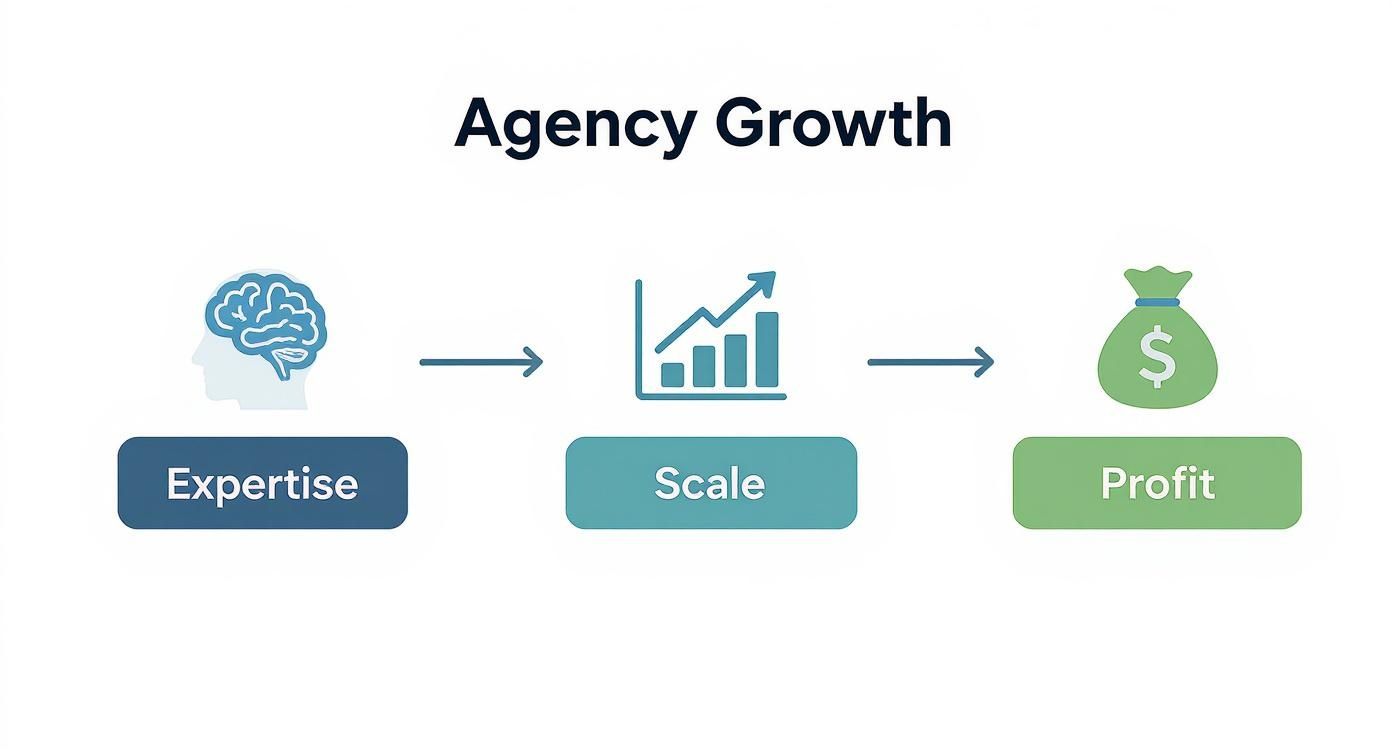
This workflow shows exactly how you can plug into a specialized team to deliver better results for your clients, faster, while keeping your own margins healthy. It's a win-win.
Agency vs White Label Provider Responsibilities
So, who does what? It's the most common question we hear. A successful partnership hinges on crystal-clear roles. Your agency remains the star of the show, managing the client relationship, while your white-label partner works their magic behind the curtain. This table breaks down a typical division of labor.
| Task | Your Agency's Role (Client-Facing) | White Label Partner's Role (Behind-the-Scenes) |
|---|---|---|
| Brief and Goal Setting | Gathers client needs, brand guidelines, and defines objectives. | Clarifies all requirements and refines the project scope for execution. |
| Strategy Development | Reviews the high-level plan and gives the final green light on timelines. | Crafts the detailed content calendar, brainstorms themes, and sets the strategy. |
| Content Creation | Reviews and approves final assets, ensuring they're on-brand. | Writes all the posts, designs the visuals, and handles the scheduling. |
| Campaign Execution | Shares live links with the client and provides progress updates. | Actively monitors campaign performance, engages with the audience, and optimizes ads. |
| Reporting and Analytics | Presents your agency's branded reports and strategic insights to the client. | Pulls all the raw data, compiles performance metrics, and creates dashboards. |
| Feedback and Revision | Gathers client feedback on campaigns and prioritizes any necessary changes. | Applies requested revisions and shares the updated assets for approval. |
Understanding this division of labor from the get-go prevents crossed wires and keeps projects moving smoothly. It’s all about playing to each other's strengths.
Deep Dive Into Each Stage
Let's break down what actually happens at each point in the process.
1. Client Briefing
This is where it all begins. You'll kick things off with a structured meeting to dig into your client’s world. You’re gathering their business goals, audience details, brand voice, and any visual guidelines. For a solid framework, check out our client onboarding process template.
2. Strategy Co-creation
Next, your team and your white-label partner get together to map out the game plan. This is a collaborative workshop—usually over a shared document—to nail down content themes, campaign ideas, and key performance indicators (KPIs). This session is crucial for building trust and making sure everyone is aligned on the vision.
3. Content Development
Now for the heavy lifting. Your white-label partner takes the approved strategy and turns it into tangible content. Using a shared content calendar, they'll create posts, design graphics, and write compelling captions. Everything gets sent to you for a final review before it goes anywhere.
4. Campaign Launch
Showtime! Once you’ve given the thumbs-up, the approved content goes live. Both teams keep a close eye on initial engagement and performance. This is also when you'll have a quick kickoff call to confirm ad budgets and performance benchmarks.
5. Performance Reporting
On a weekly or monthly basis, your partner will dive into the analytics. They compile all the essential metrics into a clean dashboard for you. Your job is to take that data, package it into your agency's branded report, and present the wins and next steps to your client.
6. Feedback Integration
The final step is all about closing the loop. You’ll gather your client's reactions and input, usually through a quick call or short survey. That feedback gets passed back to your partner, who then adapts their creative approach and tactics for the next round. It’s a cycle of continuous improvement.
This six-stage process creates a reliable engine for delivering top-notch social media services under your brand. You maintain full control over the client relationship while leveraging the deep expertise of your partner.
Select The Best White Label Social Media Partner
Picking a white label social media partner is one of the biggest calls you’ll make for your agency. This isn’t just another vendor you’re hiring; they’re a silent extension of your team, directly responsible for your clients' success and, by extension, your reputation. Get it right, and you unlock serious growth. Get it wrong, and you're looking at client churn, a damaged name, and wasted money.
Think of it like choosing a co-pilot. You need someone with proven expertise, great communication, and the cool-headed ability to handle turbulence. A solid vetting process is your pre-flight check, ensuring you team up with a provider who will safely get your clients where they need to go. Making a quick decision based only on price is a recipe for disaster.
Evaluate Niche Expertise and Proven Results
The very first filter you should apply is industry-specific expertise. A partner who crushes it for B2C e-commerce brands might not have a clue how to generate leads for a B2B SaaS company. Generic social media skills just don't cut it anymore; you need someone with a real track record in your clients' specific fields.
Start by digging into their portfolio and case studies. Look past the vanity metrics like follower counts and get straight to the results that actually matter to a business.
- Drill into the data: Ask for hard proof where they directly contributed to lead generation, sales growth, or a lower cost-per-acquisition.
- Verify industry experience: If you serve local dentists, ask to see successful campaigns they’ve run for other dental practices. Don't settle for "something similar."
- Assess their strategic depth: A great partner doesn’t just schedule posts. They understand the entire customer journey for that specific niche and build a strategy around it.
Scrutinize Communication and Reporting Transparency
Clear, consistent communication is the absolute bedrock of a good white label partnership. Right from the start, their communication style should feel proactive and organized. If they’re slow to respond or vague during the sales process, that’s a massive red flag for how they’ll act once they have your money.
Reporting is just as critical. You need a partner who delivers clean, branded reports you can confidently put in front of your clients.
Crucial Insight: Your white label provider’s reporting becomes your reporting. If their data is a confusing mess or lacks any real strategic insight, you're the one who looks unprepared in front of your client. Demand clarity from day one.
Before you sign anything, insist on seeing a sample report. Does it clearly connect social media activity to your client's business goals? Is it easy to understand and professionally designed? This one document tells you almost everything you need to know about their commitment to accountability. Our guide on white label social media management can also give you some great benchmarks for what to look for.
Assess Cultural Fit and Workflow Integration
Finally, a partnership is about more than just skills—it’s about fit. Your white label provider will be working closely with your team, so their internal culture and workflow have to mesh with yours. A mismatch here creates constant friction and headaches.
Think about how they handle the day-to-day operations:
- Tool Integration: Do they use project management and communication tools that play nice with your current software? Or will you be forced into a clunky, unfamiliar system?
- Escalation Protocols: What’s their process when something goes wrong? You need to know there's a clear plan for handling urgent issues or unexpected campaign problems.
- Creative Revisions: How do they handle feedback? Is their process collaborative, or is it rigid and defensive?
Finding a partner who feels like a natural extension of your own team is the ultimate goal. They should be just as invested in your clients' success as you are. By taking the time to diligently evaluate their expertise, communication, and cultural alignment, you can build a partnership that not only delivers amazing service but also becomes a powerful engine for your agency's growth.
Tap Into Advanced Social Media Trends With a White Label Partner
The social media world moves at a breakneck pace. One minute it's all about fleeting stories, the next it’s about augmented reality filters and AI-powered personalization. Keeping up is a full-time job, and for most agencies, hiring specialized talent for every new trend just isn't in the budget.
This is where a strategic white label partnership becomes a secret weapon. Instead of scrambling to build a new department from the ground up, you can instantly plug into a team that already lives and breathes these advanced services. It lets you offer the latest and greatest to your clients, positioning your agency as a leader without the massive overhead and risk.
Master Social Search Optimization
One of the biggest shifts we're seeing right now is the rise of Social Search Optimization (SSO). Younger audiences, especially Gen Z, are ditching Google for TikTok and Instagram when they’re looking for anything from product reviews to the best local coffee shop.
This isn’t your classic SEO. It’s a whole new game that blends search principles with the art of social content. A specialist white label partner knows exactly how to play.
- Keyword-Driven Video: They know how to weave high-intent search terms into video descriptions, on-screen text, and even voice-overs so your client’s content gets found.
- Smart Hashtag Strategy: Forget generic tags. They dig deep to find and use niche, discoverable hashtags that pull in the right kind of audience.
- Algorithmic Formatting: They understand how to structure content to please both the platform's algorithm and the person doing the searching.
By bringing in an SSO expert, you give your clients a massive competitive edge, making sure their content isn't just getting scrolled past—it’s actively being discovered by people ready to buy.
The global social media marketing market is on track to blow past $32.55 billion by 2025, largely because platforms like TikTok are getting so complex. In this new world, making content discoverable with SSO isn't just a nice-to-have; it's essential for getting seen and winning over younger customers. Find out more on how AI and AR are shaping social media trends at aisinnovate.com.
Deploy AI and AR Without the Hefty Investment
Artificial intelligence and augmented reality aren't sci-fi anymore; they're real, practical tools driving incredible engagement right now. But building these capabilities in-house requires a serious investment in both tech and talent. A white label social media provider offers a brilliant shortcut.
Imagine helping your retail client launch an AR "try-on" filter on Instagram, letting users see how a new pair of sunglasses looks on them straight from their phone. That's the kind of interactive experience that skyrockets engagement and sales. Or, they could use AI to build hyper-personalized ad campaigns that speak to each customer individually. To get a better sense of what's possible, you can check out some of the best AI tools for social media that partners use to make this happen.
When you integrate these advanced trends through a white label partnership, you’re doing more than just adding a few lines to your services page. You’re fundamentally boosting the value you deliver, helping clients connect with their audience in ways that truly matter. You stop being just another vendor and become the indispensable strategic partner they can’t imagine living without.
Boost ROI With White Label Paid Social Advertising
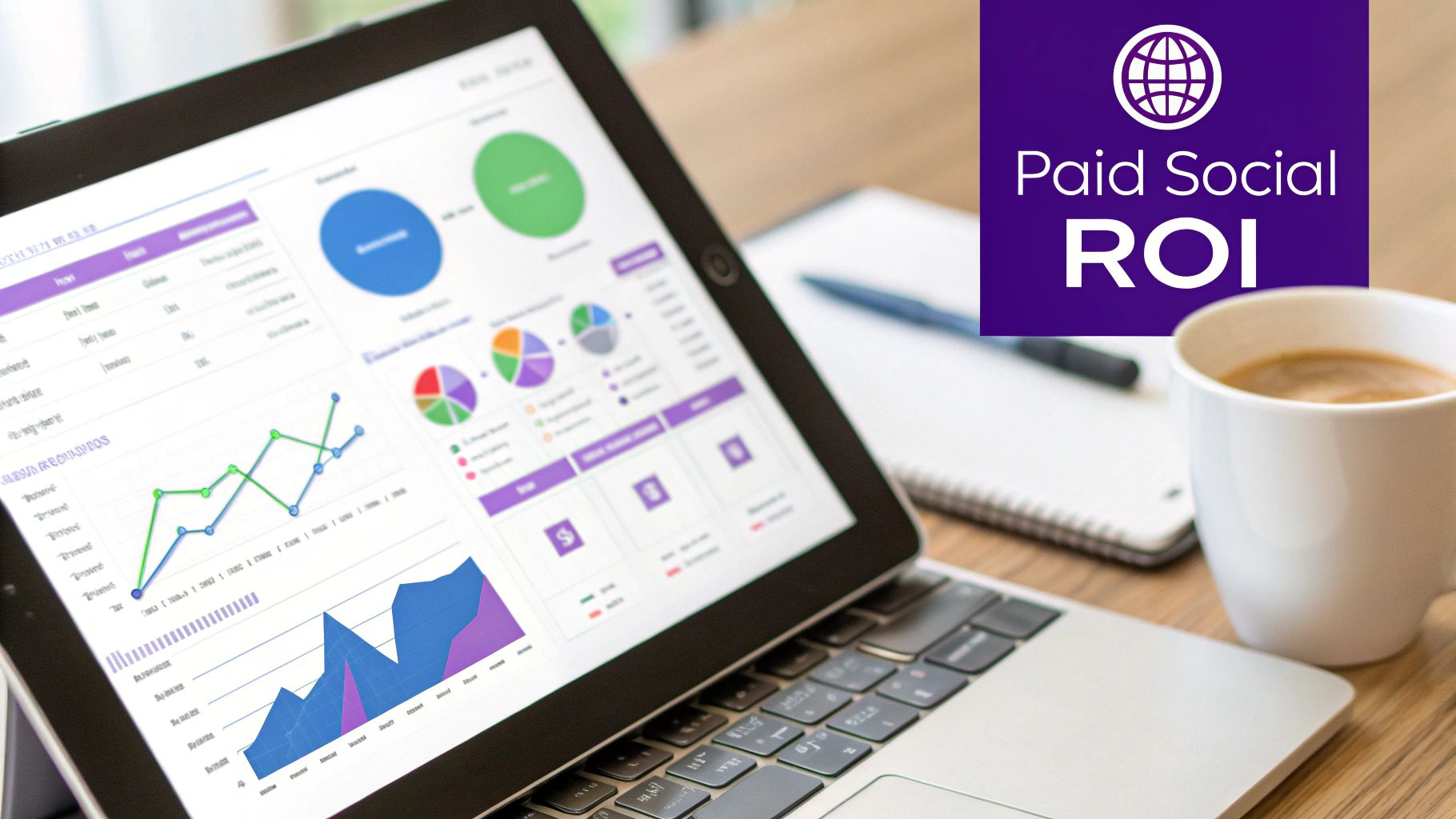
While organic social media is great for building a community, paid advertising is where the immediate, measurable growth happens. For a lot of agencies, paid social is a high-margin service that clients are practically lining up for. But let's be honest—managing it well is a tricky science. Get it wrong, and you can burn through a client's budget with very little to show for it.
This is exactly where white label social media services come in. A dedicated partner brings the specialized knowledge needed to design and run paid campaigns that not only protect your margins but also deliver a killer return on ad spend (ROAS). They get into the weeds of campaign management, which frees up your team to focus on the bigger picture: client strategy and building those key relationships.
Mastering Mobile-First Campaign Design
The paid social world is a mobile world. It's not even a debate anymore. With 83% of all social media ad spending expected to come from mobile, a desktop-first strategy is a recipe for failure. A smart white label partner knows this and builds every single campaign from the ground up with the mobile user in mind.
And we're not just talking about resizing an image. This means creating snappy, vertical video ads, writing concise copy that's easy to digest on a tiny screen, and ensuring landing pages load in a flash. This mobile-centric approach is non-negotiable for grabbing attention and driving sales where your client's audience is actually hanging out.
Advanced Targeting and Dynamic Testing
The real magic of paid social is in its ridiculously powerful targeting options. White label experts are masters at digging into platform data to create laser-focused audiences based on demographics, interests, online behaviors, and even purchase history. They go way beyond the basics, building lookalike audiences and custom segments to find new customers who act just like a client's best ones.
But they don't stop there. The best partners are constantly testing and tweaking every piece of the puzzle to squeeze out more performance.
- Creative Testing: Which image, video, or headline actually gets the click? Let’s find out.
- Audience Testing: Pitting different audience segments against each other to see which group is the most profitable.
- Placement Testing: Analyzing performance across different spots, like stories, feeds, or reels.
This relentless testing ensures the ad budget is always flowing to the highest-performing combinations, which maximizes results and cuts down on wasted spend. If you want to get a ballpark idea of your potential returns, using a social media ROI calculator is a great way to set some clear benchmarks from the start.
Social media ad spending shot past $276 billion globally in 2025 and is on track to hit $406 billion by 2029. When you see platforms like LinkedIn boosting purchase intent by a massive 33%, it's clear that outsourcing this complex work to specialists is a direct investment in your client’s bottom line. You can find more social media advertising insights on SocialPilot.co.
By bringing in a white label provider for paid social, you can confidently offer a service that delivers real, tangible results. You'll improve client outcomes, drive down their cost per acquisition, and build a reputation for being an agency that drives serious growth—all under your own brand.
Frequently Asked Questions
How Do I Keep My Brand Voice Intact?
This is a big one. Agencies often worry that bringing in a white-label partner will water down the unique voice they've worked so hard to build. The good news is, it doesn't have to.
The secret is a rock-solid content guideline document—think of it as a brand playbook. This should cover everything from tone and vocabulary to the specific emojis you do (or don't) use. Paired with regular weekly review calls for quick feedback, you can keep everything perfectly aligned.
- Use your brand playbook to define your tone, style, and vocabulary.
- Get on the same page with shared tools like Trello or Asana for tracking drafts and approvals.
- Always provide a few "gold standard" example posts to show exactly what you're looking for.
One fashion agency we know saved 3 hours every week just by syncing up on a shared approval board. It sounds simple, but it works.
Key Insight: Clear guidelines can slash revision rounds by 50%, making brand preservation almost automatic.
What Kind of Pricing Should I Expect?
Figuring out the right pricing model is huge—it directly impacts your margins and keeps clients happy. Most white-label providers stick to three common structures.
You've got hourly billing, which is transparent but can be a pain to scale. Then there are retainer fees, which give you predictable monthly revenue, and per-project pricing, which ties costs directly to specific deliverables. Many agencies also build tiered packages to give clients flexibility.
- Hourly Rates: Typically range from $75–$150 per hour.
- Monthly Retainers: Packages often fall between $2,000–$5,000.
- Performance-Based Fees: These are tied to specific results, like hitting an engagement goal.
A tech agency we worked with boosted its profitability by 18% after moving clients to a retainer model. It created a steady, predictable cash flow that made scaling much easier.
How Do I Track Performance and Show ROI?
If you can't measure it, you can't manage it. Tracking the right metrics is how you prove your value and build unshakable trust with your clients. The key is to focus on the indicators that actually matter, so reports stay concise and impactful.
Tools like Google Analytics, Sprout Social, and even the native platform dashboards give you all the data you need. Just be sure to set clear KPIs from the start, like reach, engagement rate, and conversions.
“Data-driven insights are the compass that guides strategy adjustments,” notes social media expert Jana Lee.
This practice helps you spot trends early, so you can double down on what’s working and cut what isn’t. Regularly reviewing your analytics is the best way to prevent wasted ad spend and keep campaigns on track.
What Are the Common Pitfalls to Avoid?
Knowing what not to do can save you a world of headaches and keep your white-label partnership running smoothly.
The biggest tripwires are almost always miscommunication, scope creep, and vague contracts. Get these right from day one, and you'll sidestep most of the common problems.
- Failing to define scope: This is a direct invitation for scope creep. Get it all in writing.
- Ignoring timelines in the SLA: This is how projects get delayed and clients get frustrated.
- Skipping regular check-ins: A lack of communication is where partnerships go to die.
A small agency we know avoided a potential lawsuit simply by clarifying content usage rights in their contract before any work began.
Important Note: Always clarify ownership and licensing terms before a single post is created. This prevents messy disputes down the road.
A simple onboarding checklist and clear, documented procedures can prevent a surprising amount of trouble.
For a faster way to scale your agency’s social media output while keeping your brand front and center, try MakerBox and see immediate results: https://www.makerbox.io


